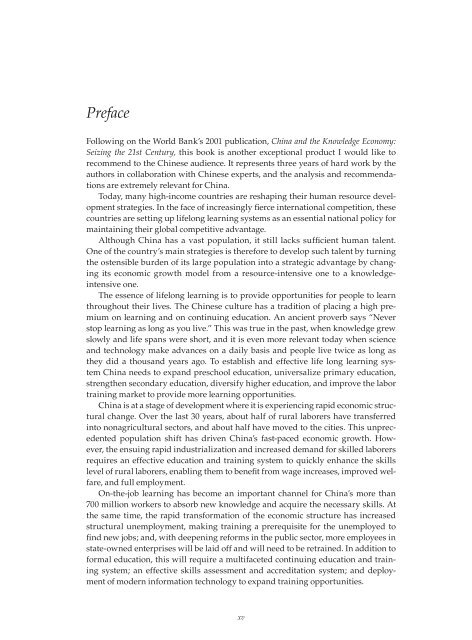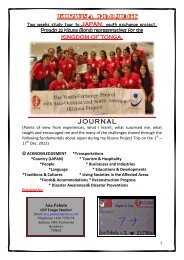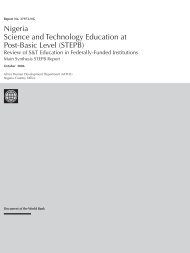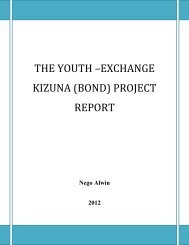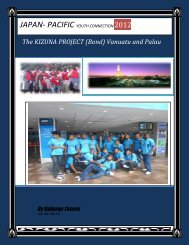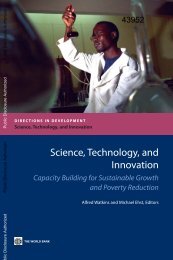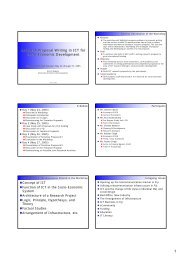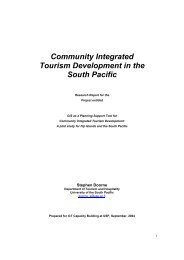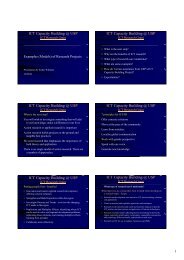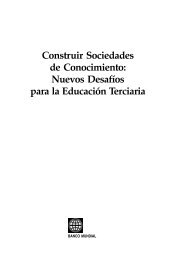Enhancing China's Competitiveness Through Lifelong Learning ...
Enhancing China's Competitiveness Through Lifelong Learning ...
Enhancing China's Competitiveness Through Lifelong Learning ...
Create successful ePaper yourself
Turn your PDF publications into a flip-book with our unique Google optimized e-Paper software.
Preface<br />
Following on the World Bank’s 2001 publication, China and the Knowledge Economy:<br />
Seizing the 21st Century, this book is another exceptional product I would like to<br />
recommend to the Chinese audience. It represents three years of hard work by the<br />
authors in collaboration with Chinese experts, and the analysis and recommendations<br />
are extremely relevant for China.<br />
Today, many high-income countries are reshaping their human resource development<br />
strategies. In the face of increasingly fierce international competition, these<br />
countries are setting up lifelong learning systems as an essential national policy for<br />
maintaining their global competitive advantage.<br />
Although China has a vast population, it still lacks sufficient human talent.<br />
One of the country’s main strategies is therefore to develop such talent by turning<br />
the ostensible burden of its large population into a strategic advantage by changing<br />
its economic growth model from a resource-intensive one to a knowledgeintensive<br />
one.<br />
The essence of lifelong learning is to provide opportunities for people to learn<br />
throughout their lives. The Chinese culture has a tradition of placing a high premium<br />
on learning and on continuing education. An ancient proverb says “Never<br />
stop learning as long as you live.” This was true in the past, when knowledge grew<br />
slowly and life spans were short, and it is even more relevant today when science<br />
and technology make advances on a daily basis and people live twice as long as<br />
they did a thousand years ago. To establish and effective life long learning system<br />
China needs to expand preschool education, universalize primary education,<br />
strengthen secondary education, diversify higher education, and improve the labor<br />
training market to provide more learning opportunities.<br />
China is at a stage of development where it is experiencing rapid economic structural<br />
change. Over the last 30 years, about half of rural laborers have transferred<br />
into nonagricultural sectors, and about half have moved to the cities. This unprecedented<br />
population shift has driven China’s fast-paced economic growth. However,<br />
the ensuing rapid industrialization and increased demand for skilled laborers<br />
requires an effective education and training system to quickly enhance the skills<br />
level of rural laborers, enabling them to benefit from wage increases, improved welfare,<br />
and full employment.<br />
On-the-job learning has become an important channel for China’s more than<br />
700 million workers to absorb new knowledge and acquire the necessary skills. At<br />
the same time, the rapid transformation of the economic structure has increased<br />
structural unemployment, making training a prerequisite for the unemployed to<br />
find new jobs; and, with deepening reforms in the public sector, more employees in<br />
state-owned enterprises will be laid off and will need to be retrained. In addition to<br />
formal education, this will require a multifaceted continuing education and training<br />
system; an effective skills assessment and accreditation system; and deployment<br />
of modern information technology to expand training opportunities.<br />
xv


